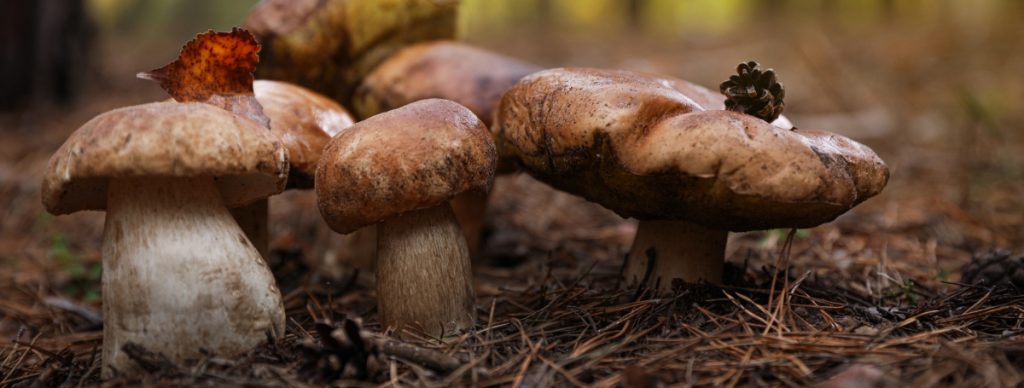Mushrooms are delicious, fascinating, unique, dangerous and sometimes just plain weird.
But, no matter how you feel about them, there’s no denying they play a significant role in our world and are vital for the ecosystem.
What’s more, they add new taste dimensions to our meals and offer a bounty of medicinal and nutritional benefits.
Here are some interesting, amazing and fun mushrooms facts to help you better understand these unique organisms.
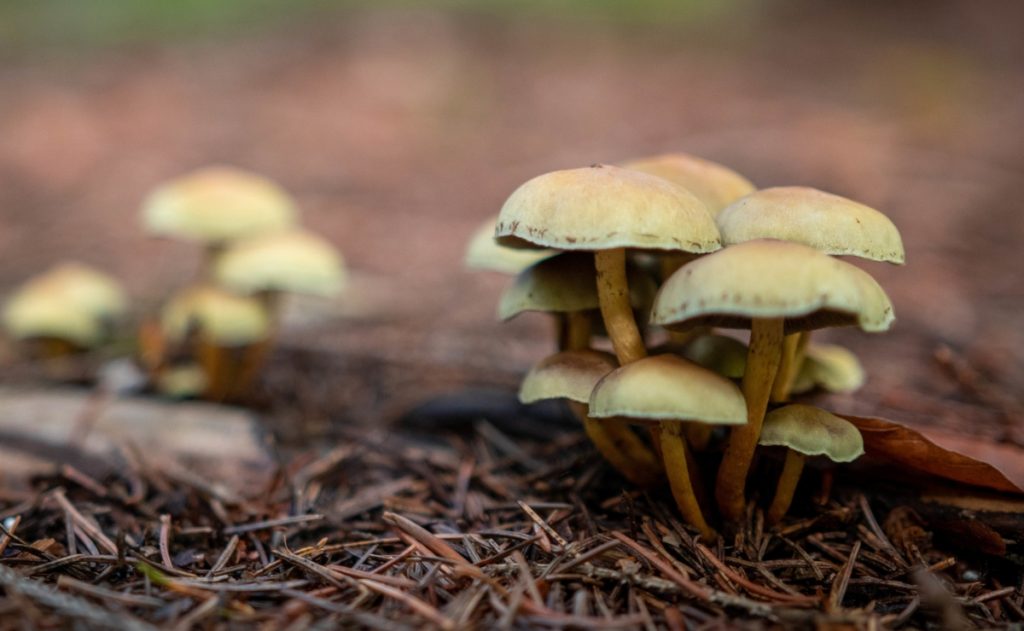
30 Mushroom Facts
Mushrooms are neither plants nor animals. They’re a fungus and belong to kingdom fungi, along with yeasts, mildews, molds, rusts and smuts.
Fungi, especially mushrooms, are so interesting and unique that although we start with three fungi facts, there’s so much more to discover.
1. Fungi Are Genetically Closer to Humans Than Plants
In the past, scientists considered fungi to be plants, but now we know better. Discoveries show that fungi are more closely related to animals, including humans, than to plants.
Here are some of the things that make fungi more like animals:
- They absorb nutrients from organic matter, unlike plants that produce their food through photosynthesis.
- Fungi have a fibrous substance called chitin in their cell walls, the same as animals. Plants do not.
- Like us, fungi need food, water and oxygen to survive. They use their hyphae to absorb nutrients, water, and oxygen from their surroundings and expel waste products and CO2.

2. Fungi Are The Largest Life Forms on Earth
Fungal mycelium can grow and expand for miles under the ground as they go in search of food.
The largest living organism on the planet is a single honey mushroom (Armillaria ostoyae) in the Malheur National Forest, Oregon, USA.
It’s around 3.5 miles (5.6 km ) wide, occupies an area of 965 hectares (2,385 acres), and is at least 2,400 years old. But could be much older.
It also holds the record for being the world’s largest fungus.
3. Fungi Allow Trees to Talk to Each Other
Mycorrhizal fungi have a symbiotic relationship with host trees and plants. The fungi interact with the plant’s roots and provide nutrients, getting simple sugars in return.
But, the fungi’s mycelial network also facilitates the sharing of nutrients and information between plants and trees of different species.
In 1997 Prof Suzanne Simard realized that trees were talking to each other using mycorrhizal networks and came up with the term “Wood Wide Web.”
The vast networks of mycelium allow trees to share nutrients and warn each other about droughts, pests and diseases.
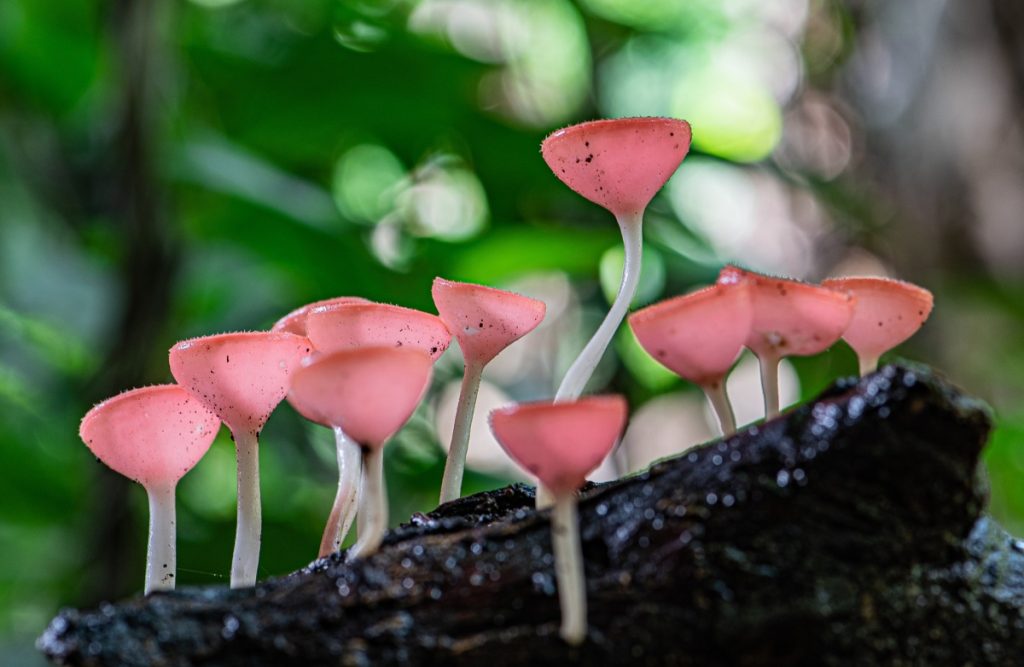
Mushroom Life Cycle Facts
Here are some interesting mushroom facts to do with a mushroom’s life cycle and how and how they reproduce.
4. Mushrooms Are The Fruit of a Fungus
Mushrooms are the fruiting bodies or reproductive structures of a much larger underground fungus.
Much like an apple is the fruit of a much larger fruit tree, the mushrooms you see are the tip of the iceberg and usually only represent about 5% of the fungus.
5. Mushrooms Can Stay Dormant For Years
The largest part of the fungus is the underground network of mycelium, made up of millions of thread-like hyphae. The primary role of mycelium is to reproduce and ensure the survival of its species.
To reproduce, it needs to produce mushrooms that need specific temperatures and humidity levels.
Some mushrooms can stay dormant underground for many years or even decades until weather conditions are right to produce mushrooms and distribute spores.
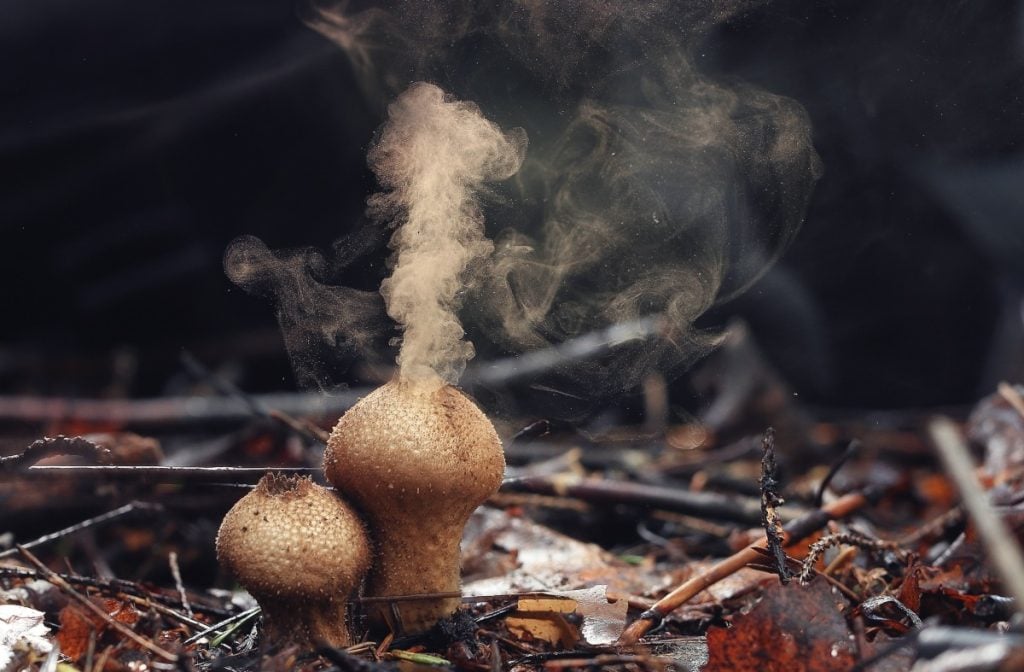
6. Mushrooms Can Create Airflow to Disperse Spores
Mushrooms disperse spores in two phases. First, they actively eject spores from the gill’s surface using surface tension catapults.
This phase is followed by what scientists thought was a passive phase where whatever winds were around beneath the mushroom cap distributed the spores.
But, it turns out that the second phase is not so passive, and mushrooms also play a role in this phase of spore dispersal.
Research shows that some mushrooms use evaporative cooling to create convective airflows capable of distributing their spores.
Even when they’re close to the ground with no wind, the airflows created can transport spores from gaps of 0.4 inches (1 cm) high and lift them 4 inches (10 cm) or more into the air.
Mushroom Fun Facts
We still have a lot to learn about mushrooms. Scientists studying mushrooms and other fungi frequently come across amazing and unusual discoveries as well as new uses for mushrooms.
Here are some mushroom facts that are both interesting and fun:
7. Some Mushrooms Glow in the Dark
Scientists know of around eighty different species of fungi that glow in the dark and are constantly discovering new species.
The latest, discovered in Meghalaya, India, is a fragile mushroom that grows on decaying bamboo.
These mushrooms glow so brightly that the locals call them “electric mushrooms” and use them as natural torches.
Bioluminescent mushrooms use light-emitting compounds called luciferins to glow and attract insects.
They use these insects to spread their spores to new locations helping the species survive.
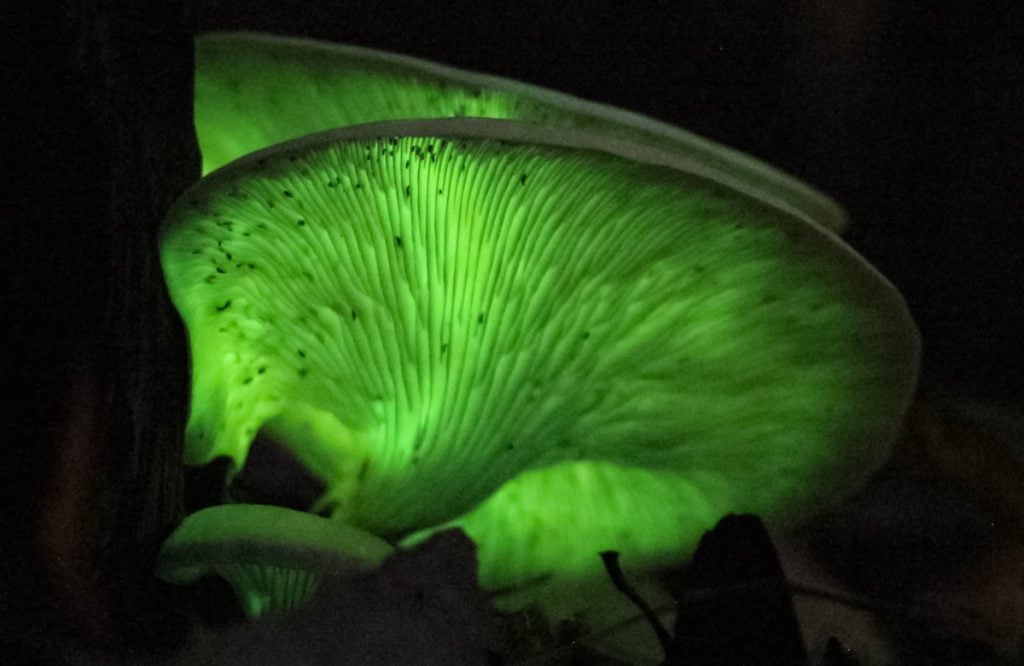
8. Lightening Boosts Mushroom Growth
For thousands of years, Japanese farmers have believed that lightning strikes made mushrooms more plentiful, and recent research has proved they’re correct.
Researchers have bombarded several species of mushrooms with artificial lightning strikes and found it effective in several species. But, it has the biggest effect on shiitake mushrooms.
Exposure to indirect lightning strikes makes mushrooms multiply and can double a shiitake crop.
9. Mushrooms Make Colorful Natural Dyes
Mushrooms can be used alone or combined with other ingredients to make beautiful natural dyes.
You can produce almost any color imaginable using different combinations of mushrooms and solvents.
Artist Miriam C. Rice was responsible for highlighting the use of mushrooms as a dye in 1972, and now they’re used to dye wool, paper and other fibers.
When combined with ammonia, chanterelles give you muted yellow, oyster mushrooms a grey-green, hen of the woods an orange, puffballs a rust red, lobster mushrooms a bright pink, turkey tail a brown and reishi a rust color.
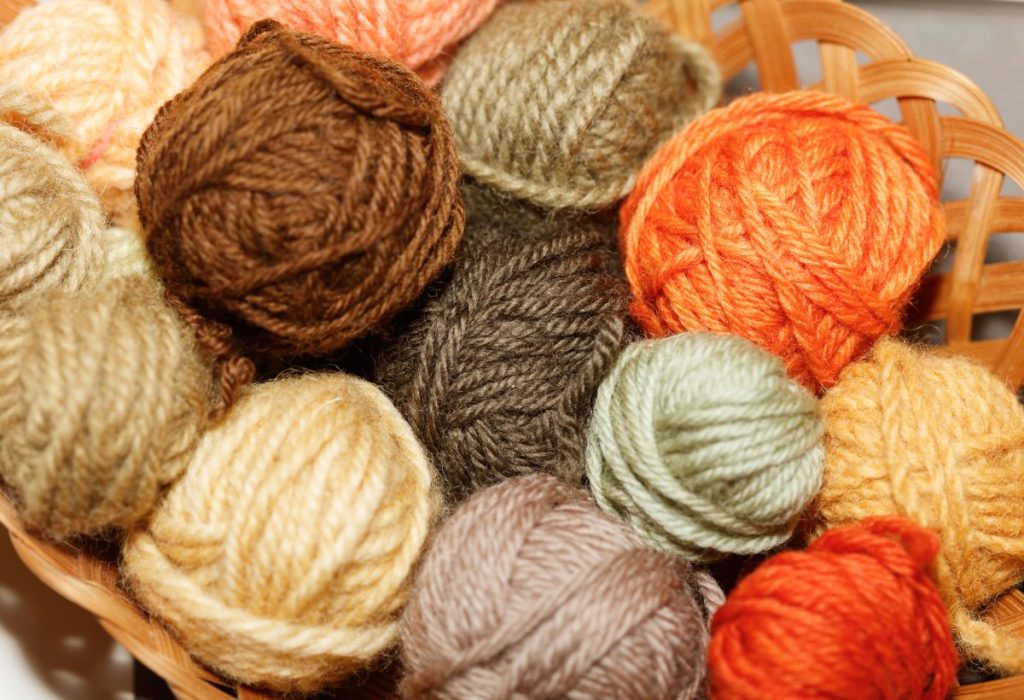
10. People Grow Mushroom Mycelium Packaging Material
A biotech company called Ecovative Design is using mushroom mycelium and agricultural byproducts to grow durable,100 percent compostable packaging materials.
The mushroom packaging they create is like styrofoam, and you can use it as packaging for just about anything.
The big difference is that mushroom packaging only takes 45 days to compost, whereas styrofoam takes about 500 years to biodegrade.
They use agricultural byproducts as a substrate material when making the mycelium packaging.
These are mixed with the mycelium and placed in a mold. The mycelium then grows and spreads throughout the substrate.
After seven days, they stop the growth using a drying and heat treatment and the result is a cost-effective, insulated and water-resistant packaging material.
11. You Can Use Mushrooms as a Natural Pesticide
In 2011 mycologist Paul Stamets patented two natural mushroom-based pesticides that use parasitic cordyceps mushrooms.
One pesticide is for termites, carpenter ants and fire ants, and the other for 200,000 other types of insects.
Usually, mushroom spores repel insects. But, Stamets discovered that if mycelium is cultured to delay sporulation, insects consume it.
Mycelium of insect-specific parasitic fungi is placed on grain, attracting insects that consume the grain or transport it back to their nests.
Once the fungus is inside the insect, it kills the host and uses it to produce mushrooms that grow out of the dead insect’s body.
These mushrooms then produce spores that repel even more insects.
12. There’s a Mushroom That Devours Itself When Picked
Shaggy ink cap mushrooms, also called a shaggy mane or lawyers wig, are delicious when picked while they’re still in the button stage with white gills. But you’ll need to cook them quickly.
When shaggy ink caps mature, their gills turn pink and fill with a black liquid containing spores. This black goo drips to the ground and spreads the spores.
Once the mushroom has dispersed the spores, it uses auto-digestion to devour itself.
Picking a shaggy ink cap triggers auto-digestion, and you usually have 24 hours to use them before they become an inedible black mess.
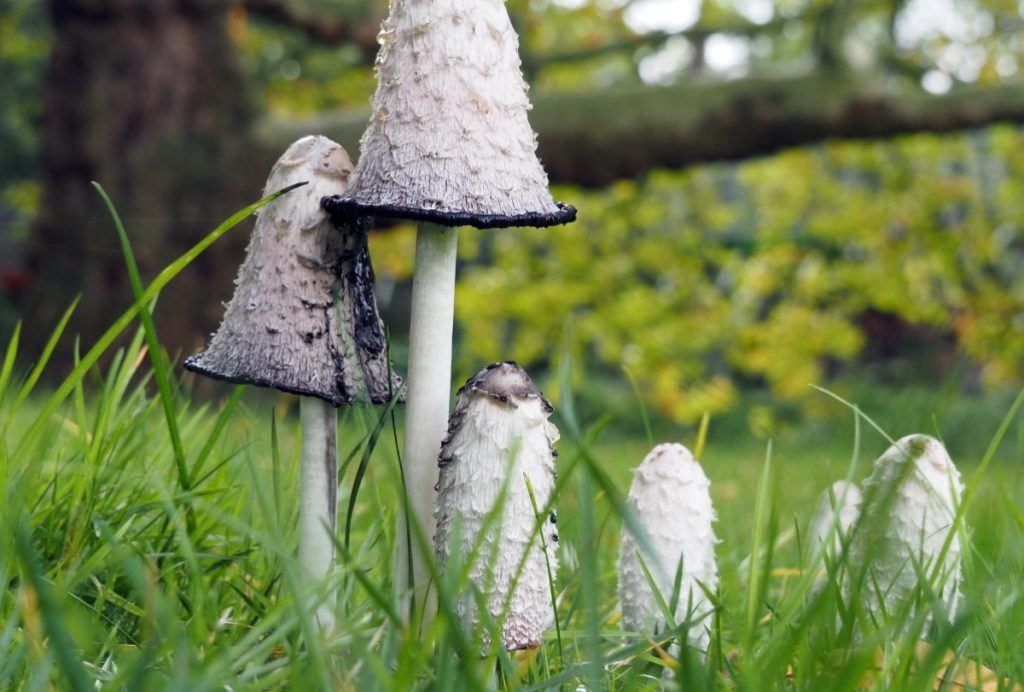
Mushroom Nutrition Facts
Many people consider mushrooms a superfood, and it’s not surprising as they’re nutrient-packed and offer numerous health benefits.
Our article on the health and nutritional benefits of mushrooms has more information for you, but here are a few lesser-known facts:
13. Mushrooms Produce Vitamin D
Mushrooms are the only food in the fresh produce section that produce vitamin D.
When exposed to ultraviolet light from sunlight or an ultraviolet lamp, nearly all edible mushrooms produce significant amounts of Vitamin D. Some create as nearly as much as over-the-counter Vitamin D supplements.
Like humans, mushrooms contain a pro-vitamin called ergosterol that they convert into vitamin D in the presence of ultraviolet light.
White mushrooms, button mushrooms, crimini or brown mushrooms, portabella mushrooms, and maitake mushrooms are all excellent producers of Vitamin D.
14. Mushrooms Help Fight Age-Related Diseases
Researchers found that mushrooms have high amounts of ergothioneine and glutathione, both important antioxidants, that help fight age-related diseases.
The amounts of ergothioneine and glutathione in mushrooms vary by species, with porcini mushrooms containing high amounts of the two compounds.
Common mushrooms, like button or white mushrooms, have less of these antioxidants. But they still have higher amounts than most other foods.
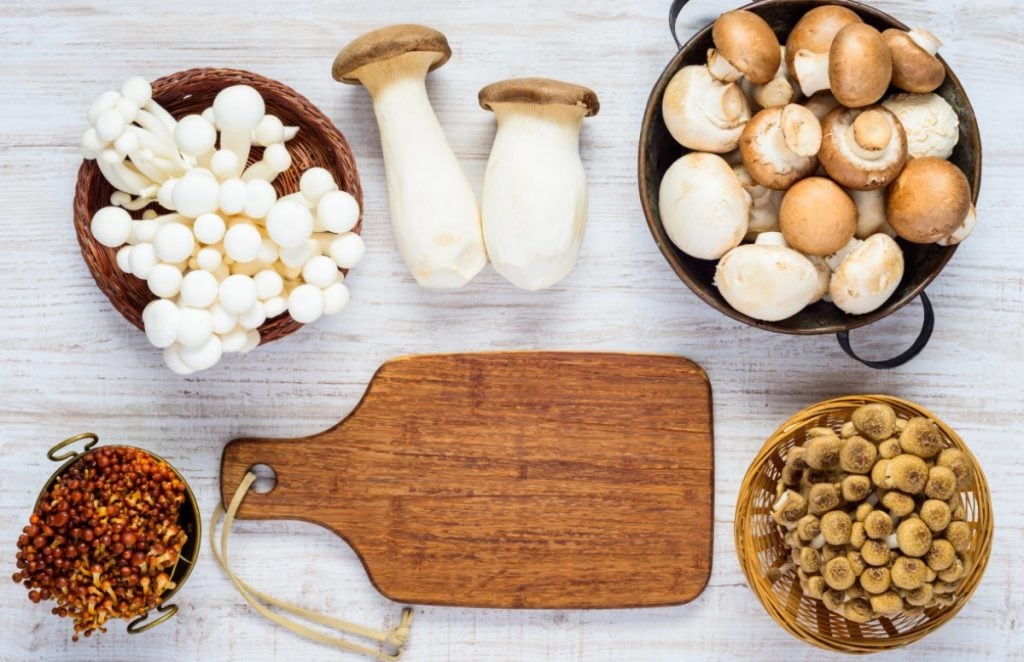
15. Mushrooms Are a Low-Energy-Density Food
Low energy density foods contain fewer calories per gram than other foods. The composition of food dictates its density.
Mushrooms are low energy dense and ideal for people who are watching their weight as they’re 80 to 90 percent water, low in calories, fat-free, cholesterol-free and gluten-free.
Edible Mushroom Facts
16. Scientists Have Classified 2,189 Mushrooms as Edible
An edible mushroom is a mushroom that’s safe and suitable to eat. But, it’s not always easy to confirm a mushroom’s edibility, and there’s often confusion about which species are safe to consume.
Conflicting reports of reactions to mushrooms and people who are more allergic than others cause concern, and it’s always better to be safe than sorry.
According to a recent evidence-based mushroom classification system, there are 2189 edible mushrooms. Of these, 2006 are safe to eat, and 183 need pre-treatment to make them safe to eat.
17. Yartsa Gunbu is The Most Expensive Edible Mushroom in The World
Yartsa Gunbu, or the caterpillar fungus, is a parasitic fungus that kills its host caterpillar and uses it to produce a mushroom that grows out of the caterpillar’s head.
The mycelium-filled caterpillar remains and the mushroom offer potent health benefits, and traditional healers have used them for centuries to treat treat illnesses and boost energy and endurance.
Eating them is considered a status symbol, and at $50,000 per pound (£80,500 per kilogram), or $2,000 for a single ounce, they’re the most expensive mushrooms in the world.

18. Mushrooms Have The Fifth Primary Taste
Basic or primary tastes are unique tastes that cannot be created by combining other tastes.
Most people are only familiar with four primary tastes, sweet, salty, bitter, and sour. But some foods have a fifth primary taste called umami, and mushrooms are one of them.
Chefs describe the umami taste as:
- A mild, subtle taste
- A taste that spreads across the tongue
- A persistent, lingering taste
- A mouthwatering sensation
19. Button, Cremini and Portobello Mushrooms Are The Same Mushroom
All of these mushrooms are the same species of mushroom, Agaricus bisporus. The only difference is their age.
Button or white mushrooms, which are entirely white, are baby Agaricus bisporus harvested when the mushrooms are very young.
Cremini mushrooms, which have brown caps and no visible gills, are slightly older than button mushrooms.
And portobellos, which are much larger, with flat brown caps and visible gills, are mature Agaricus bisporus.

20. Mushrooms Can Turn Plastic Into Food
Scientists discovered the first fungus that could digest polyurethane plastic in 2011 and another in 2017.
Since then, they have discovered more than 50 types of mushrooms that can digest and break down different types of plastics.
With plastic digesting fungi in mind, Katharina Unger, of LIVIN Studio, together with the microbiology faculty at Utrecht University, created a project called the Fungi Mutarium.
The project used mycelium from two common types of edible mushrooms, oyster mushrooms and split gill mushrooms.
They grew the fungi mycelium around pods of edible agar that contained pieces of plastic. And over time, the fungi fully degraded the plastic and formed a small mycelium snack.
Mushroom Foraging Facts
When foraging for mushrooms, there are several excellent mushroom identification apps that help with mushroom identification. But always err on the side of caution.
If you are not sure about a mushroom, don’t risk it. Here’s why.
Approximately 50 percent of all known mushrooms are inedible but harmless, 20 percent can make you sick, and one percent could kill you.
Here are some mushrooms facts for foragers:
21. The Death Cap Mushroom is One of The Deadliest Organisms on Earth
You can find these deadly mushrooms throughout Europe and the United States. Half a death cap mushroom (Amanita phalloides) contains enough toxin to kill an adult.
They closely resemble some species of edible mushrooms and have been described as being large and meaty, with a delicious smell and taste.
The amatoxins in death cap mushrooms can withstand cooking temperatures, and when eaten, they quickly damage cells throughout the body.
Within 12 hours, the amatoxins cause violent abdominal pain, vomiting, diarrhea, and intense thirst. And, within 72 hours, severe liver damage results, leading to a coma or death.

22. Mushrooms Create Fairy Rings
Fairy rings are naturally occurring circles of mushrooms that appear year after year in grassy areas and woodlands.
For thousands of years, different cultures have been fascinated by fairy rings, and they are the subject of many folklores and myths. But there is a scientific explanation.
When the spores of certain mushrooms land in suitable locations, they germinate, and their mycelium grows outwards from the center.
As the mycelium network expands outwards in a circle, it decomposes all the organic matter it encounters and grows further to access more nutrients.
When the fungus fruits, mushrooms appear at the leading edge of the circle where there is still organic matter and nutrients available to sustain them.
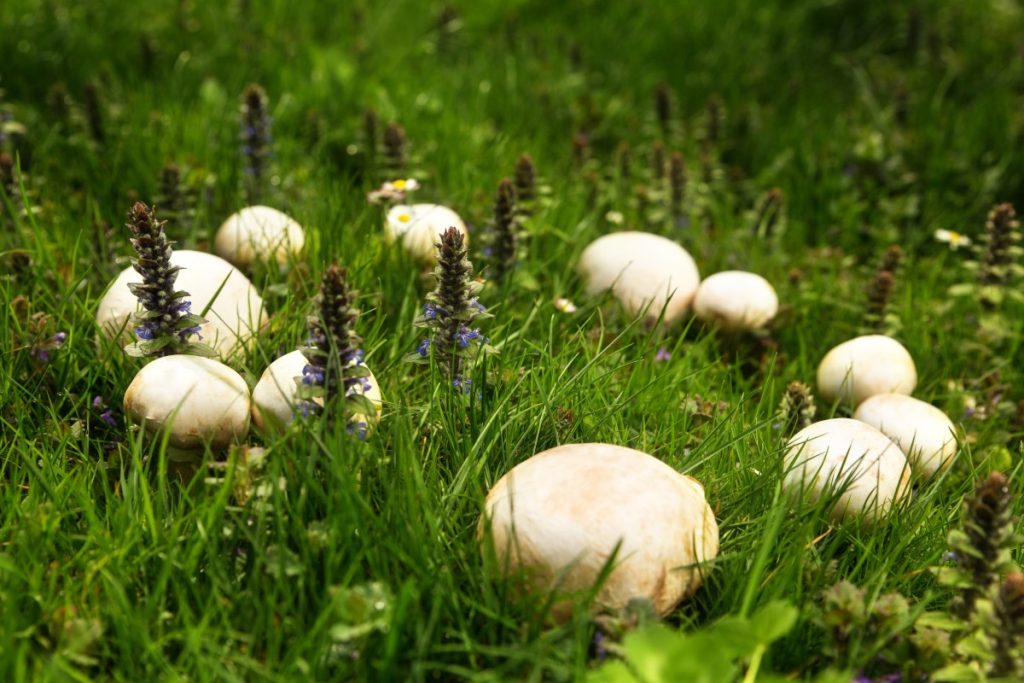
23. Mushrooms And Toadstools Are The Same
From a scientific perspective, there’s no difference between a toadstool and a mushroom. There’s no specific way to tell them apart, and toadstools aren’t a distinct species or group of fungi.
But, people usually use the word toadstool for colorful or poisonous mushrooms that are inedible. We tend to picture toadstools as being bright red mushrooms with a defined cap and stalk.
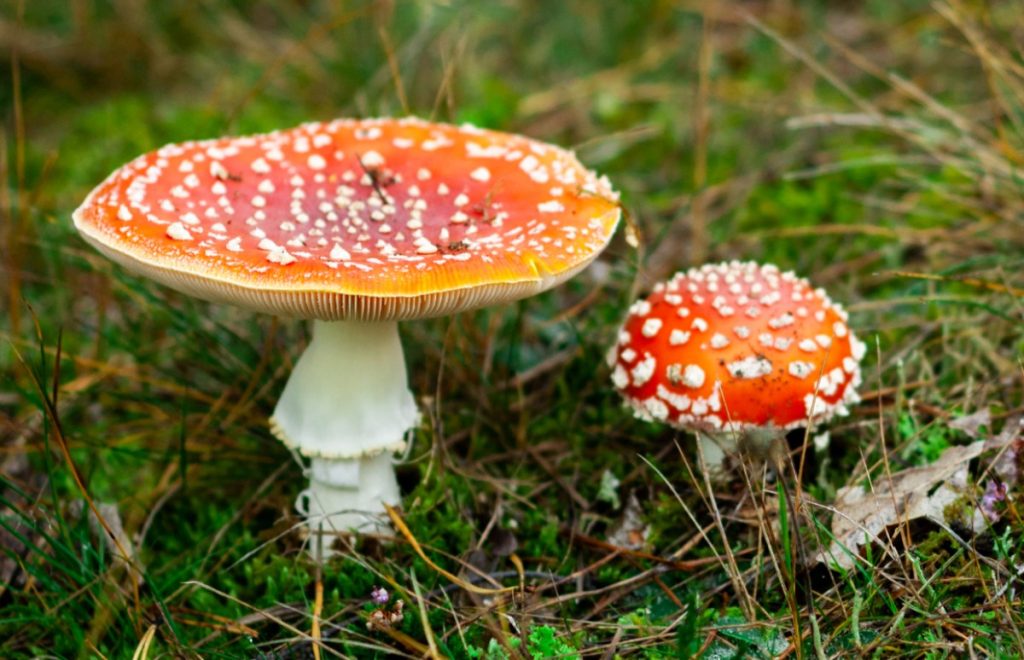
Historical Mushroom Facts
Mushrooms have been around since prehistoric times, and mushrooms and humans have a long history together.
Here are a few interesting historical mushroom facts:
24. More Than 350 Million Years Ago There Were Giant Mushrooms on Earth
More than 350 million years ago, when all land plants were only a few feet high, towering mushrooms 24 ft (7.3 m) tall and 3 ft (90 cm) wide dotted the landscape.
Chemical analysis of a fossil found in Saudi Arabia shows that the 20 ft (6 m) tall organism was a fungus that became extinct more than 350 million years ago.
Fossils of these organisms, known as Prototaxites, were first discovered by a Canadian, John William Dawson, in 1859. But no one could figure out what the giant spires were.
Until 2007 when a study concluded the spires were a fungus, some type of gigantic mushroom.
But not everyone is convinced, as scientists still find it difficult to imagine such an enormous mushroom.
25. People Used Mushrooms 5300 Years Ago
In 1991 hikers found a 5,300-year-old, mummified body in a melting glacier in the Italian Alps.
Researchers named the iceman Otzi, and he has provided useful insights into how people lived.
Interestingly he carried two different types of mushrooms with him, indicating that humans have known how to use mushrooms for thousands of years.
He carried two pieces of birch polypore (Piptoporus betulinus) separately on leather thongs. And several pieces of tinder polypore (Fomes fomentarius) in a leather bag.
Historically humans have used tinder polypores to start fires and to create a felt-like fabric.
And, it’s believed that he was using the birch polypore for medicinal purposes to remove intestinal parasites.

26. Ancient Egyptians Reserved Mushrooms For Royalty
In hieroglyphics from over 4600 years ago, ancient Egyptians referred to mushrooms as plants of immortality and believed they were a gift from the God Osiris.
They were so revered that commoners were not allowed to touch them, and only royalty ate mushrooms.
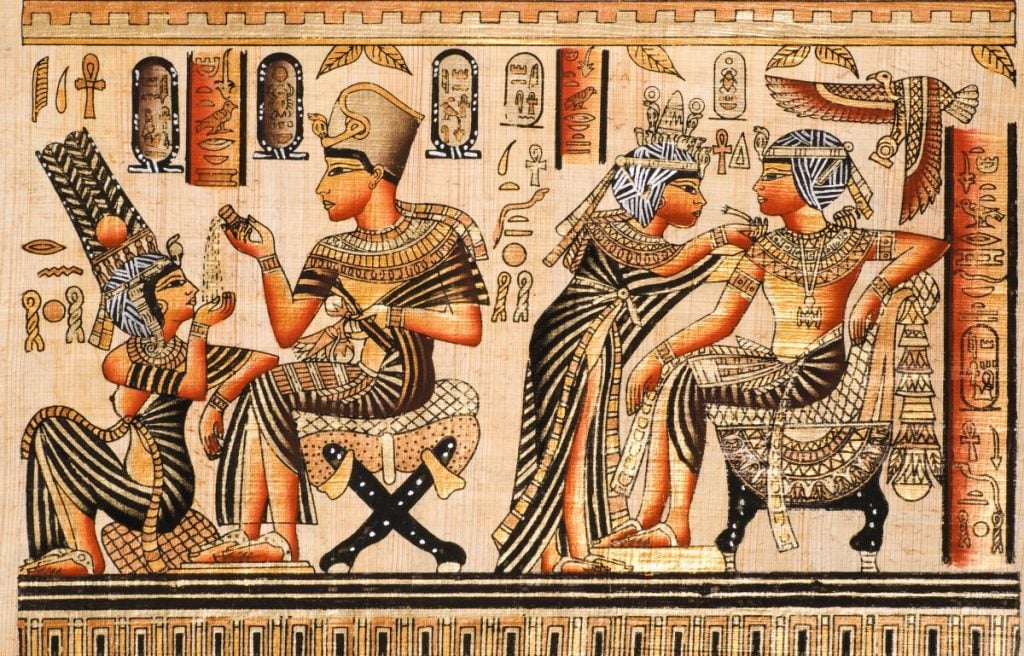
Mushroom Growing Facts
Growing your own fresh mushrooms at home is extremely rewarding and not as difficult as you may think.
Here are some mushroom growing facts to inspire you:
27. You Don’t Need to Grow Mushrooms in an Expensive Sterile Environment
People often think that you need a sterile environment, heat sterilized substrate, and specialized grow rooms to grow mushrooms.
Fortunately, this is not true, and beginner mushroom growers can get started without spending lots of money on specialized equipment.
We suggest using fast-growing oyster mushrooms and growing them on already pasteurized coffee grounds or sawdust pellets. It’s much quicker to get set up and start growing, and there’s a lot less to learn.
And, if you want to use straw as a substrate, you can pasteurize it using simple cold-water techniques.
Our article on how to set up a low-tech mushroom farm has more information to get you started.
28. You Don’t Need a lot of Space to Grow Mushrooms
Growing mushrooms is a low-impact way to produce food. It takes less water, energy and space to produce a kilogram of mushrooms than to produce other foods.
The number of mushrooms you can produce in any area will depend on the type of mushrooms and the method you use.
But even lower-yielding mushrooms only need 0.03m2 to produce a kilogram of mushrooms, much less than most other foods.
Depending on the type of mushroom, you can grow 7 – 25 pounds of mushrooms per square foot or 35 – 125 kilograms per square meter per year.
Oyster mushrooms are high-yield mushrooms, and on our farm, we get 100 – 125 kg (220 – 276lb) of oyster mushrooms per m2 a year.
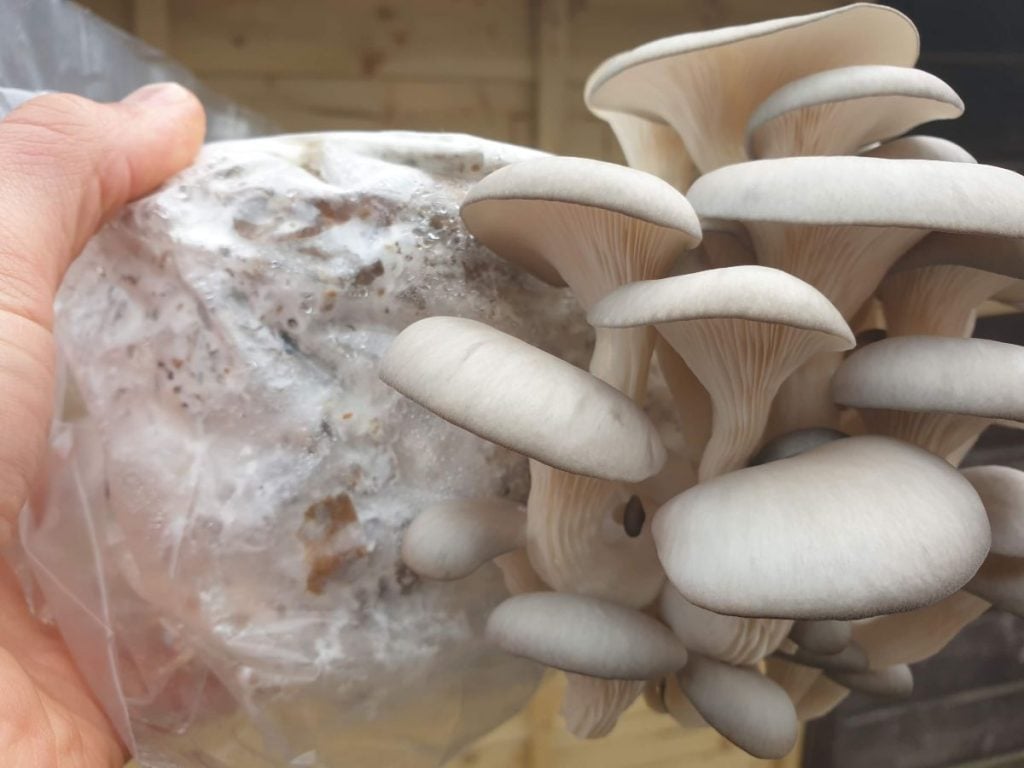
29. You Can Grow Mushrooms on Recycled Cardboard
Growing mushrooms on cardboard is environmentally-friendly as you’re using an existing product and adding another purpose to its life cycle before it gets composted.
Any mushrooms that will grow on a tree or dying logs like oyster mushrooms or lion’s mane are likely to grow on cardboard, and it’s a great way for beginners to grow mushrooms.
But, cardboard does not have as many nutrients as other kinds of substrate, and you may not get the same yield as you would using other substrates.
Some mushrooms will even grow on paper. Try growing mushrooms on a book for a fun and educational way to teach children about mushrooms.
30. Mushrooms Use Cell Enlargement to Grow
Mushrooms grow so fast it sometimes seems they appear out of nowhere.
Some species of wild mushrooms can grow from pins to full-grown mushrooms in less than a day. But, most medium to large mushroom species take three to four days to reach maturity.
Mushrooms can grow fast because they grow differently from plants and animals. Plants and animals use cell division to grow, a slow process that takes time and energy.
In the early stages of their development, mushrooms also use cell division to grow. But, by the time they’re small mushroom pins, they already have all the cells they need for the mature mushroom.
They then flood these cells with water and nutrients, which enables them to rapidly expand and grow.
Here’s a short time-lapse video where we discuss this interesting fact.
Final thoughts
Mushrooms are still relatively unknown, and scientists regularly make amazing mushroom discoveries.
Mushrooms have unique tastes and textures, making them a healthy and delicious addition to our diets.
Growing your own mushrooms is an excellent way to have an ongoing supply of fresh mushrooms, and several types of mushrooms are easy to grow at home.
Visit our Mushroom Growing Hub to learn more and discover helpful tips to get you started.
